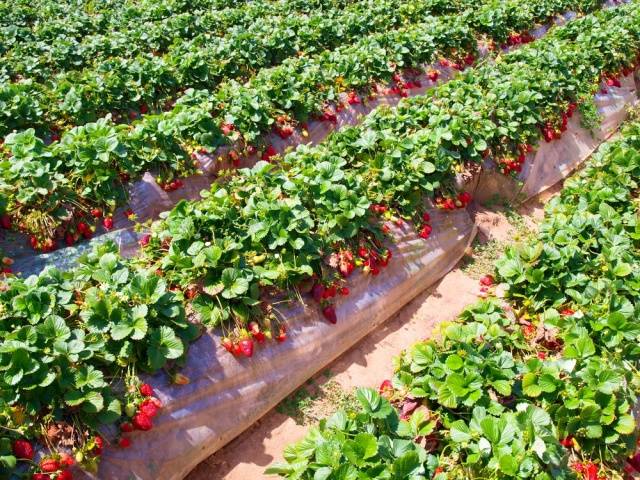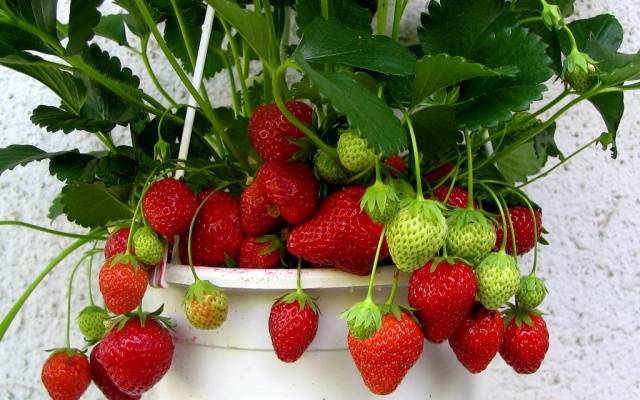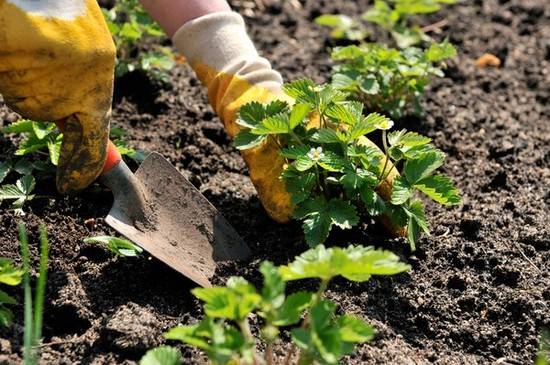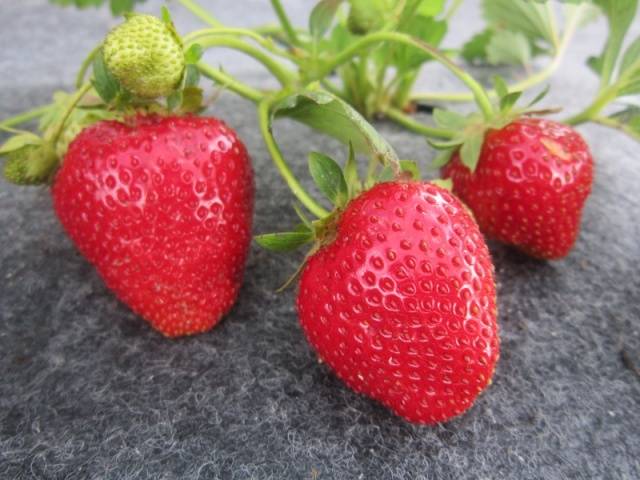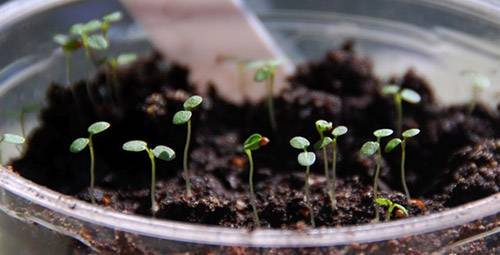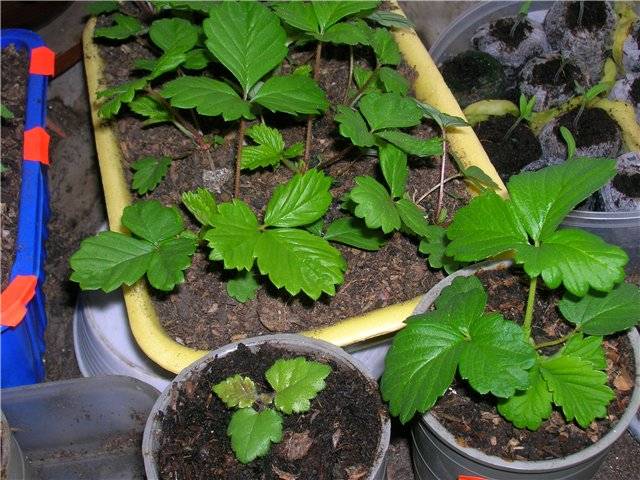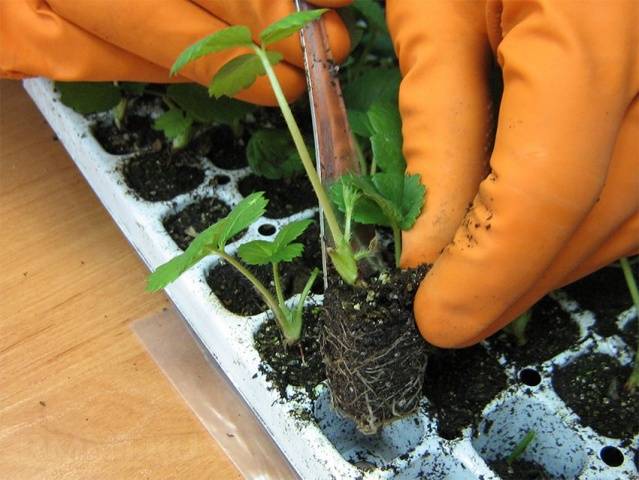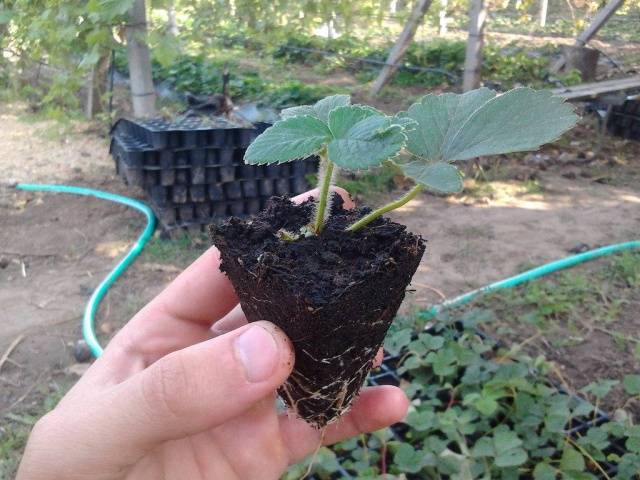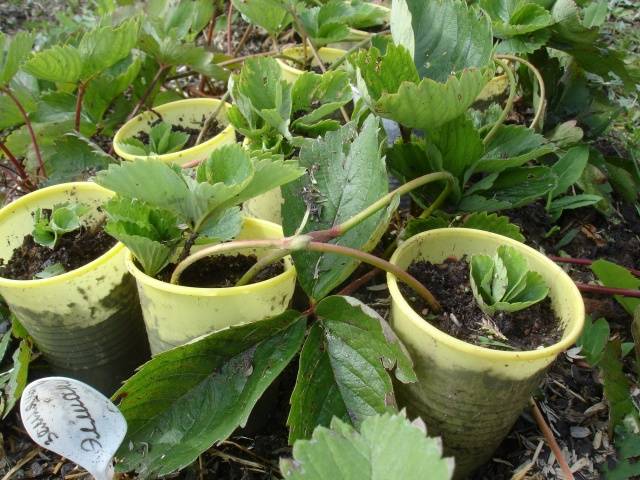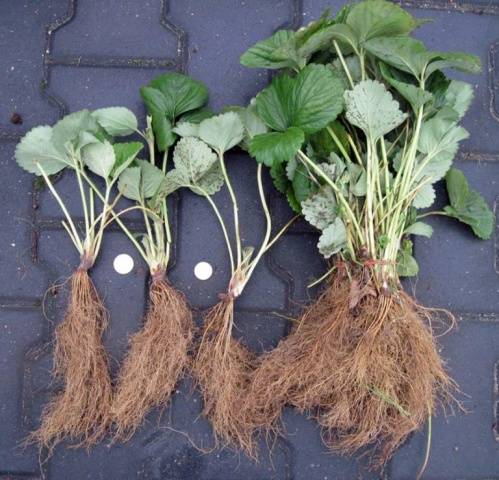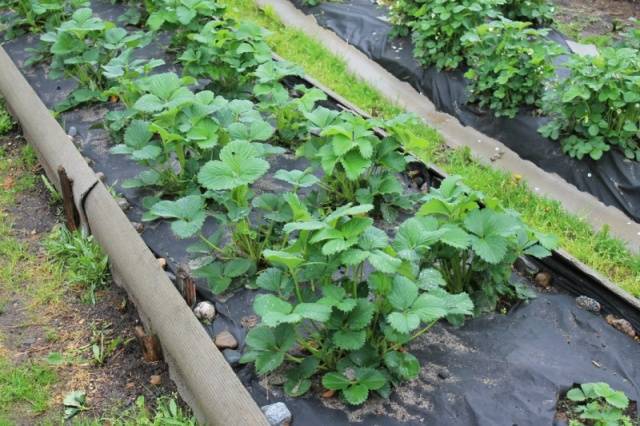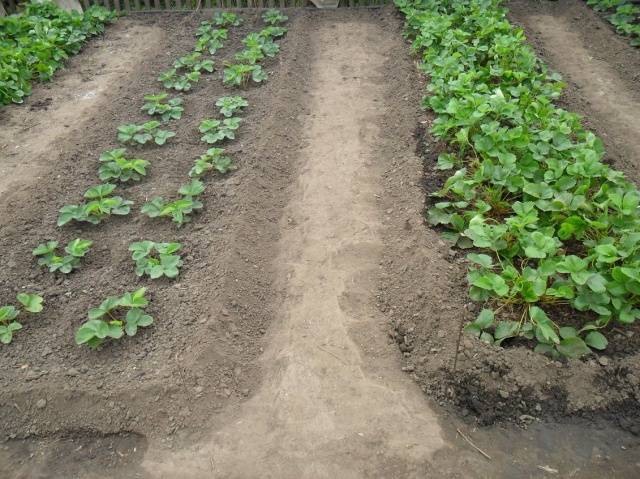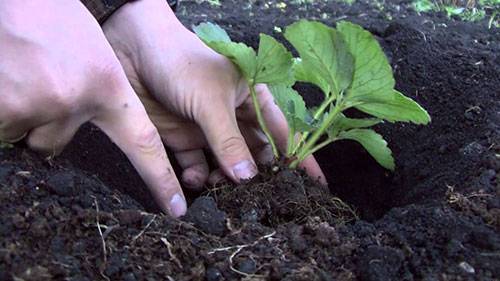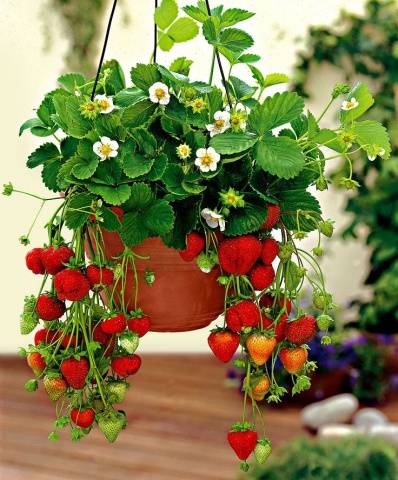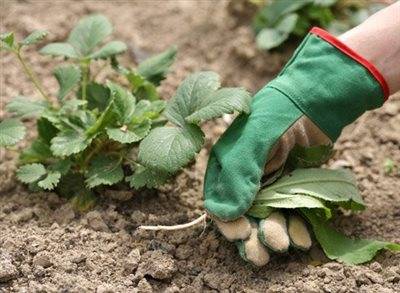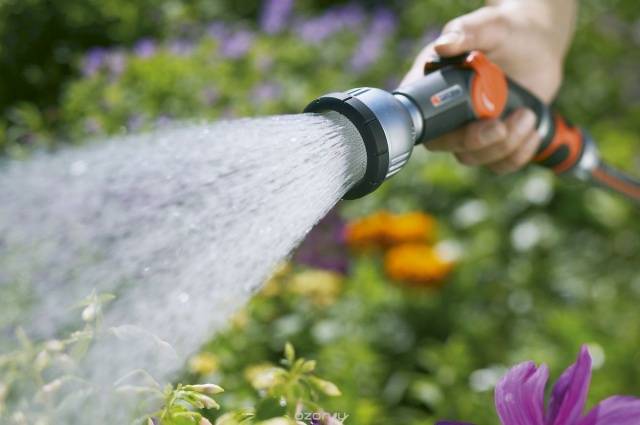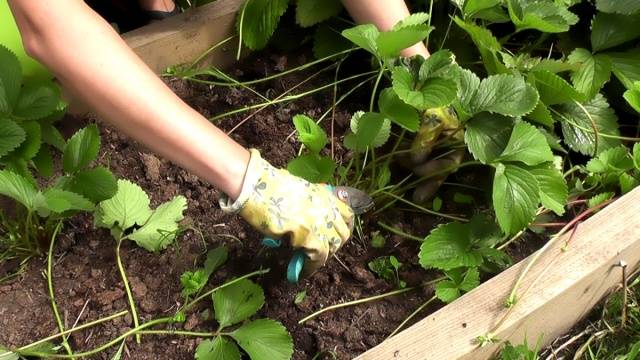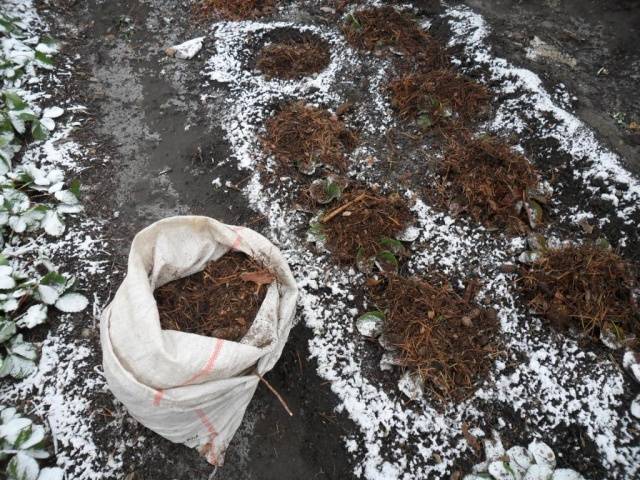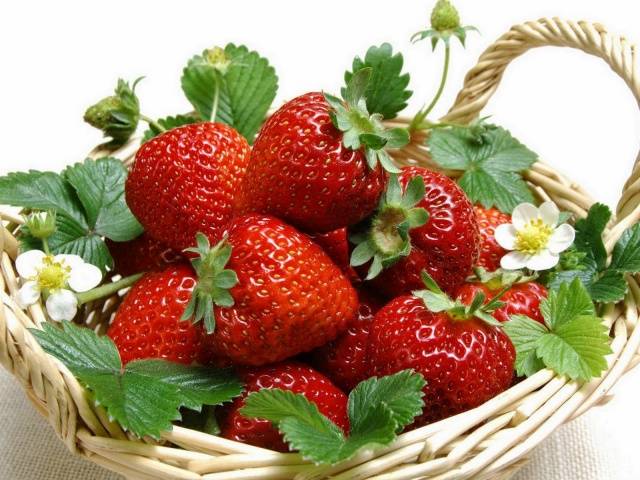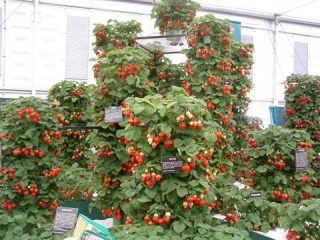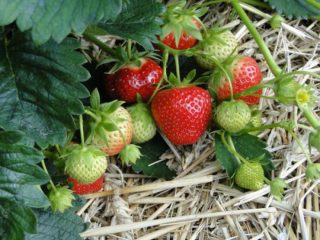Content
Growing repair strawberries is becoming more and more popular, because this type of sweet berry bears fruit continuously or allows you to harvest two or three times per season. Of course, this significantly increases the yield of strawberries as a whole, and the opportunity to eat fresh berries at any time only pleases. But some gardeners talk about the disadvantages of remontant varieties: about the increased vulnerability of such strawberries, and the taste of the berry supposedly differs much from the fruits of ordinary garden varieties.
Is it worth planting remontant strawberries on your site, and what are the features of growing remontant strawberries - this is what this article is about.
Features of remontant strawberries
Reparability is the ability of a culture to bloom and bear fruit continuously or to do it at least twice a season. Not all plants have such an incredible ability; of all horticultural crops, remontant varieties are found only among strawberries, raspberries, strawberries and some types of citrus fruits.
Fruit buds of an ordinary garden strawberry are laid only under conditions of short daylight hours, therefore this type is abbreviated as KSD... Whereas remontant strawberries can lay kidneys in two cases:
- in conditions of long daylight hours (DSD);
- in conditions of neutral daylight hours (NDM).
A variety of berries, DSD, bears fruit twice per season: strawberries ripen in July (10-40% of the harvest) and in late August - early September (90-60% of the fruits). But a variety of remontant strawberries NSD is able to bloom and bear fruit throughout the growing season, giving off its harvest gradually.
The main problem of remontant varieties is the severe depletion of bushes with strawberries or strawberries with such a tight fruiting schedule. After the last harvest, not all plants survive - most of the strawberry bushes die.
This circumstance significantly affects the life of plants; most remontant varieties are capable of bearing fruit for no more than two to three years in a row.
The primary task of the gardener is to follow the rules of agricultural techniques of remontant varieties, and you can learn how to properly grow remontant strawberries from this article.
Growing remontant strawberries in open or closed ground
In fact, there is not much difference how to grow a sweet berry: in a garden bed, in a greenhouse or on a windowsill. Repaired varieties are good because they are unpretentious to growing conditions and climatic features. However, most often, remontant strawberries are nevertheless planted in the garden and grown in ordinary beds.
Planting remontant strawberries and caring for bushes should be carried out strictly according to a specific scheme.
How to grow a remontant variety
Remnant strawberries can be grown in several ways:
- from seeds;
- dividing the bush;
- rooting of the mustache.
Each method has its own strengths and weaknesses. So, for example, sowing seeds for seedlings is much cheaper than buying ready-made seedlings from a nursery, but this is a troublesome business. At the same time, not all varieties of remontant strawberries have a mustache; there are many varieties of sweet berries without mustaches. It is possible to divide the bushes only if they are healthy and full of strength, which, as mentioned above, is rather rare for remontant varieties.
Therefore, each gardener must independently determine for himself the most acceptable way of growing berries. Strawberries can be planted both in spring and autumn; remontant varieties tolerate winter cold well.
Therefore, most gardeners prefer to plant seedlings in the ground in September, then the bushes will have a couple of weeks to root, and the next year they will already have sweet berries.
Seedling method of growing
In this case, the gardener must purchase or collect strawberry seeds on his own, and then plant them in the same way as vegetable seeds such as tomatoes, peppers or eggplants.
The berry loves the soil nutritious and loose, it is better to prepare the soil for seedlings in advance. Experienced gardeners recommend taking land for these purposes from that part of the garden where vegetables grew last season, but sod garden soil is not suitable for seedlings.
The soil should be slightly acidic or neutral. Seeds will germinate only if the soil moisture is at least 70%. Such conditions can be ensured if at least 0.7 liters of water are poured into a kilogram of purchased substrate or land mixed with humus. The earth is thoroughly mixed so that there are no lumps, and placed in prepared containers for seedlings.
About 3 cm is left from the top of the cups or boxes, the rest of the container is filled with the substrate. Seeds of remontant strawberries are evenly spread over the surface of the soil, then they are carefully sprinkled with a thin layer of dry earth or river sand. It remains only to water the seeds, for this they use a spray bottle.
Now the containers are covered with glass or foil and placed in a warm place with a constant temperature of 18-21 degrees.
After 14-20 days, the strawberry seeds should hatch, and the first shoots will appear. Then the film is removed, the seedlings are carefully watered and placed on a windowsill or in another place with sufficient sunlight.
When the plants have two or three true leaves, and this period does not come earlier than 1.5-2 months after sowing the seeds, the seedlings of the remontant culture must be dived. Plants can be transplanted both into individual containers and into spacious wooden boxes. Those who grow strawberries in the house can dive the seedlings into permanent pots.
It is necessary to dive strawberries in the same way as vegetable crops: the plants are carefully transferred together with an earthen clod between the roots. The seedlings should be deepened at the same level as they grew before. Now all that remains is to water the seedlings and monitor their development.
Strawberries must be hardened 10-14 days before transplanting into open ground. The pots are simply taken out into the fresh air, gradually increasing their residence time. Now the seedlings are completely ready for planting in a permanent place!
Reproduction of remontant strawberries with a mustache
With the help of a mustache, you can both grow individual young bushes and expand the mother bush. Anyway antennae must first be rooted.For these purposes, only the first mustache is suitable, the remaining processes will have to be removed.
In August, all flowers from the bushes should be removed, otherwise the plant will die, since it will not have enough strength both to ripen the crop and to root the shoots.
During the first fruiting period, the gardener must examine the young bushes and determine the strongest and healthiest of them. A shallow groove is made along the edge of the bed, into which the first mustache is laid.
After a few days, shoots will begin to appear on the antennae, all of them do not leave - shoots are removed, except for the first two or three sockets. Immediately, young sockets should not be separated from the mother bush, let them gain strength and power. The shoots are watered along with the old strawberry bushes and loosen the ground around them.
Approximately 7-10 days before the proposed transplantation of the processes, they are carefully separated from the mother bush, cutting the antennae. The seedlings are now ready to be planted in their permanent location.
Dividing the remontant strawberry bush
Remontant bushes are divided infrequently, since they are already weakened by prolonged fruiting. But, when there is not enough planting material in the new season, it is quite possible to resort to this method.
First you need to choose the most overgrown and strongest plants - usually two to four-year-old bushes with a well-developed root system are chosen. At this age, strawberries, as a rule, have several branched horns, each of which forms a rosette of new leaves.
In early spring, such a powerful bush should be dug up and carefully divided into rosette horns. Each seedling is planted separately in new beds.
Planting repair strawberries in the garden
Regardless of how the seedlings were obtained (seedlings, dividing a bush or rooting a mustache), planting remontant strawberries in the ground will be the same. The steps in this process are as follows:
- Site selection. A flat, sunny place in the garden is suitable for repair strawberries. Water should not stagnate on the site, the soil is preferable loamy or sandy loam. It is good if in the summer carrots, radishes or parsley grew in the same place. But the predecessors in the form of potatoes, raspberries, cabbage or tomatoes are undesirable for strawberries.
- Land preparation. A place for remontant strawberries should be prepared in advance if planting is scheduled for autumn, this is done in spring, when strawberries are planted in May, beds for it have been prepared since October. The land on the site must be thoroughly fertilized with organic compounds (humus, compost, cow dung or bird droppings). Then the soil is dug up with a pitchfork.
- In spring, remontant varieties are planted in mid-May, when the threat of night frosts has passed. If an autumn planting is planned, it is better to do this at the end of August or at the beginning of September, so that the seedlings have time to take root and get stronger before the onset of winter.
- A few weeks before planting, the land on the site must be fertilized with mineral components: 40 grams of superphosphate and 20 grams of potassium sulfate are applied to each square of soil. All this can be replaced with a tablespoon of special fertilizer "Kaliyphos". Wood ash will also be useful, they do not spare it and they bring in five kilograms for each meter of the site.
- The planting scheme for remontant strawberries can be carpet or ordinary. In the first case, the bushes are distributed evenly, leaving a distance of 20-25 cm between them.If the planting is ordinary, then the step between the plants remains within 20 cm, and the width of the rows is 70-80 cm.When choosing the method of planting a remontant culture, the presence of a mustache should be taken into account the variety, as well as the size of the bushes.
- For planting, choose a cool weather, it can be evening or a cloudy day. Pre-watered seedlings or strawberry seedlings are carefully transferred into prepared holes.If the plants are small, you can plant two strawberry bushes in one hole at once.
- Planting depth should be such that the "hearts" are slightly above ground level. Strawberry roots should not be wrinkled or bent during planting.
- The ground around the transplanted bushes is squeezed so that the roots do not hang in the air. Now it remains only to pour over the strawberries with warm water.
How to care for repair strawberries
In principle, remontant varieties are quite unpretentious. But large berry sizes, reaching 70-100 grams, as well as fruit bearing extended for the whole season, leave their marks - the bushes are quickly depleted, therefore, they require timely feeding.
Caring for a remontant strawberry is as follows:
- watering;
- fertilizer;
- loosening or mulching the soil;
- deletion weeds;
- pest and disease control;
- pruning bushes and preparing for wintering.
Spruce needles, sawdust, straw or humus can be used as mulch.
Watering strawberries of remontant varieties
For the same reason repairing varieties will have to be watered a little more often than ordinary garden strawberries. Immediately after transplanting, the bushes are watered daily, after a few days watering becomes less frequent, and as a result, such care is reduced to twice a month.
It is necessary to use only warm water for irrigation, and do this when the heat subsides (in the morning or in the evening). The soil in the area with strawberries should be moistened by at least 2-3 cm. The next day after watering, the soil should be covered with mulch or carefully loosened so that the roots have enough air and a hard crust does not form.
How to fertilize remontant strawberries
Bushes, exhausted by abundant fruiting, need abundant and regular fertilization. Not only must the soil in the area with strawberries be nutritious, the reserves of minerals in the soil must be constantly renewed - maintenance must be regular.
Most of all, plants need nitrogen and potassium, but the soil can be fed with phosphorus only once - during the preparation of the site for remontant strawberries.
An approximate feeding scheme is as follows:
- In the third decade of May, strawberries are fertilized with urea, using one or two percent composition.
- In the second half of June, when the re-harvest peduncles are formed, the berry is watered with liquid cow dung or chicken droppings.
- Together with organics, mineral additives such as "Kemira Lux", "Solution" or "Kristallin" are used.
For the whole season, it is necessary to carry out from 10 to 15 complex top dressing of remontant strawberries, this is the care of this culture.
Pruning repair strawberries
Caring for remontant strawberries also includes such a component as pruning bushes. This procedure should be carried out once a year, but you can do pruning either in the spring or in the fall.
In cold regions with long and frosty winters, strawberries are usually covered. Therefore, pruning of bushes is carried out in the fall. When the bush gives up all the fruits, the lower leaves are carefully removed from it, you need to try not to damage the upper leaves, in the axils of which fruit buds are laid for the next season.
Strawberry whiskers can be trimmed periodically throughout the season, or you can not remove them at all - the gardeners of the world still argue about this. But, if the summer resident decided to remove the strawberry leaves in the fall, then he must definitely cut off the mustache.
If the remontant varieties were not pruned in the fall, care is certainly carried out in the spring. For this purpose, last year's yellowed or diseased leaves are removed from the bushes, and then the plants are treated against diseases and pests.
Learn more about how to grow, care and prune remontant strawberries in the video.
Outcomes
Growing remontant strawberries and caring for them do not present any difficulties - those who have been involved in the cultivation of garden varieties will certainly cope with this task.
You can propagate remontant varieties in the same way as ordinary ones, but most often this is done by rooting a mustache, and for mustacheless varieties, the seedling method is used. Caring for multiply fruiting varieties is not at all complicated: strawberries are watered, fertilized and cut once a year. And enjoy the aromatic sweet berries throughout the summer season!
